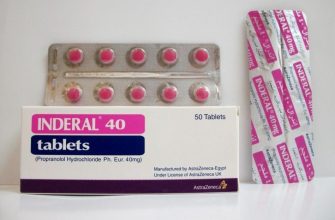Prednisone, while effective for inflammation, often raises blood pressure. This effect stems from its influence on sodium and water retention, increasing blood volume and consequently, pressure. Keep in mind this isn’t universal; individual responses vary.
High blood pressure is a significant concern, especially when taking prednisone. Regular monitoring is crucial. Your doctor should closely track your blood pressure during treatment and adjust dosage or medication as needed to manage potential increases. This proactive approach minimizes risk.
Lifestyle changes play a vital role. A balanced diet low in sodium, regular exercise, and stress management techniques can significantly mitigate prednisone’s effects on blood pressure. These strategies are important regardless of medication. Consult your doctor for personalized recommendations tailored to your health situation.
Remember: This information doesn’t replace professional medical advice. Always discuss your medication and blood pressure with your physician. They can provide accurate guidance based on your specific health profile and other medications you may be taking.
- Does Prednisone Lower Blood Pressure?
- Prednisone’s Initial Effect on Blood Pressure
- Understanding the Mechanism
- Monitoring and Management
- Long-Term Effects
- Seeking Advice
- Long-Term Prednisone Use and Blood Pressure Changes
- Prednisone and Hypertension: Understanding the Risk
- Factors Influencing Blood Pressure Changes
- Managing Blood Pressure While on Prednisone
- Factors Influencing Prednisone’s Impact on Blood Pressure
- Monitoring Blood Pressure While on Prednisone
- Consulting Your Doctor: Importance of Personalized Advice
Does Prednisone Lower Blood Pressure?
Prednisone generally raises blood pressure, not lowers it. This is a common side effect.
The mechanism involves increased sodium and water retention, leading to higher blood volume and subsequently higher blood pressure.
- The extent of blood pressure increase varies depending on the dose and duration of prednisone use.
- Higher doses and longer treatment periods typically result in more significant blood pressure elevations.
- Individuals with pre-existing hypertension are at increased risk for significant blood pressure spikes.
Regular monitoring of blood pressure is crucial while taking prednisone. Your doctor will likely schedule check-ups to assess your response to the medication and adjust the dose or consider additional treatments if needed.
If you experience unusually high blood pressure while on prednisone, contact your doctor immediately. They may adjust your dosage, prescribe additional medications to manage your blood pressure, or suggest alternative treatment options.
- Report any symptoms like headaches, dizziness, or shortness of breath, which could indicate dangerously high blood pressure.
- Maintain a healthy lifestyle, including a balanced diet low in sodium, regular exercise, and stress management, to help mitigate the blood pressure-raising effects of prednisone.
- Openly discuss concerns about blood pressure with your healthcare provider. They are your best resource for managing this potential side effect.
Remember, this information is for general knowledge and does not replace professional medical advice. Always consult your doctor before starting or stopping any medication.
Prednisone’s Initial Effect on Blood Pressure
Prednisone, initially, often raises blood pressure. This increase is usually seen within the first few days of starting treatment. The magnitude varies depending on the dose and individual sensitivity.
Understanding the Mechanism
This initial blood pressure rise stems from prednisone’s influence on the body’s fluid and electrolyte balance. It increases sodium and water retention, leading to increased blood volume. This, in turn, elevates blood pressure.
Monitoring and Management
Regular blood pressure monitoring is crucial during prednisone treatment. Your doctor will likely schedule check-ups to track your blood pressure and adjust your dosage or prescribe additional medication if needed. They may suggest lifestyle modifications, like a low-sodium diet, to help manage the increase.
Long-Term Effects
Important Note: While an initial increase is common, the long-term effect of prednisone on blood pressure is more complex and can vary. Some individuals experience a sustained increase, while others see their blood pressure return to normal or even decrease after the initial period. Consistent monitoring is key.
Seeking Advice
Always consult your doctor or pharmacist about any concerns regarding prednisone and its effects on your blood pressure. They can provide personalized guidance based on your specific health condition and medication regimen.
Long-Term Prednisone Use and Blood Pressure Changes
Prolonged prednisone use often raises blood pressure. This increase stems from mineralocorticoid effects, causing sodium and water retention, ultimately increasing blood volume and pressure.
Studies show a noticeable rise in systolic and diastolic blood pressure in patients on prednisone for more than three months. The magnitude of the increase varies, depending on dosage and individual patient factors like pre-existing conditions. Higher doses generally correlate with more significant blood pressure elevation.
Regular monitoring of blood pressure is crucial for individuals taking prednisone long-term. Your doctor should check your blood pressure frequently, adjusting medication accordingly. This might involve adding antihypertensive drugs like ACE inhibitors or beta-blockers to manage the elevated pressure.
Lifestyle changes play a significant role. A balanced diet low in sodium, regular exercise, and weight management can help mitigate the blood pressure increase. Limiting alcohol intake is also recommended.
Always consult your physician before making any changes to your medication or lifestyle plan. They can tailor advice specific to your health situation and the duration of your prednisone treatment.
Prednisone and Hypertension: Understanding the Risk
Prednisone, a corticosteroid, can raise your blood pressure. This effect is dose-dependent, meaning higher doses generally lead to a greater increase. The mechanism involves increased sodium and water retention, along with reduced potassium levels.
Factors Influencing Blood Pressure Changes
Several factors influence how much prednisone affects your blood pressure. Pre-existing hypertension significantly increases your risk of experiencing further blood pressure elevation. Duration of prednisone use also plays a role; longer treatment periods correlate with a higher chance of increased blood pressure. Your individual response to the medication varies too.
Regular monitoring of your blood pressure during prednisone treatment is crucial. Your doctor should schedule check-ups to track changes and adjust your dosage or prescribe additional medications if necessary. They may also consider alternative treatments if your blood pressure becomes dangerously high.
Managing Blood Pressure While on Prednisone
Lifestyle adjustments can help mitigate the blood pressure-raising effects of prednisone. A balanced diet low in sodium and rich in potassium is recommended. Regular aerobic exercise also contributes to blood pressure control. Your doctor can provide personalized advice based on your health status. Open communication with your physician is key to successful management of your blood pressure while on prednisone.
Factors Influencing Prednisone’s Impact on Blood Pressure
Prednisone’s effect on blood pressure varies significantly. Dosage is key: Higher doses generally increase blood pressure more than lower doses. This is because prednisone influences mineralocorticoid receptors, causing sodium and water retention, and consequently elevating blood pressure.
Your baseline blood pressure matters. Individuals with pre-existing hypertension are at higher risk of experiencing a more pronounced increase in blood pressure while on prednisone. Regular monitoring is crucial for these patients.
Duration of treatment plays a role. Short-term prednisone use may have minimal impact, while prolonged use increases the likelihood of blood pressure elevation. This underscores the importance of the shortest effective treatment duration.
Other medications interact with prednisone. Concomitant use of certain drugs, such as nonsteroidal anti-inflammatory drugs (NSAIDs) or certain antidepressants, can exacerbate blood pressure increases. Consult your physician about potential drug interactions.
Individual factors such as age, overall health, and the presence of other medical conditions also impact response to prednisone. Your doctor will consider your unique medical history when prescribing and monitoring your treatment.
Dietary sodium intake directly affects the blood pressure response to prednisone. Limiting sodium intake can help mitigate potential blood pressure increases. This dietary modification is often recommended alongside prednisone therapy.
Monitoring Blood Pressure While on Prednisone
Regularly check your blood pressure at home. Aim for at least once daily, preferably at the same time each day. Use a validated home blood pressure monitor and follow the instructions carefully for accurate readings. Record your readings in a log or use a dedicated blood pressure tracking app.
Schedule regular checkups with your doctor. These appointments allow for professional monitoring and adjustments to your prednisone dosage or other medications as needed. Your doctor will interpret your readings within the context of your overall health.
Report significant changes in your blood pressure immediately. Contact your doctor if you experience a sudden increase or decrease, or if your blood pressure consistently remains outside your target range. Prompt reporting helps ensure timely intervention.
Maintain a healthy lifestyle. This includes regular exercise, a balanced diet low in sodium, and stress management techniques. These lifestyle modifications can positively influence blood pressure, even while taking prednisone.
Understand your baseline blood pressure. Knowing your typical blood pressure readings before starting prednisone helps you recognize significant deviations. Discuss your baseline with your doctor to establish a personalized monitoring plan.
Discuss potential drug interactions. Some medications may interact with prednisone and affect blood pressure. Always inform your doctor and pharmacist of all medications and supplements you are taking.
Consulting Your Doctor: Importance of Personalized Advice
Always discuss prednisone and its potential effects on your blood pressure with your doctor. They’ll consider your specific health history, current medications, and other factors.
This personalized approach is vital. For example, someone with pre-existing hypertension may experience a different response to prednisone than someone with normal blood pressure. Your doctor will assess your risk and adjust your treatment accordingly.
Regular monitoring is key. Your doctor might recommend blood pressure checks during prednisone treatment. This allows them to detect any significant changes promptly and make necessary adjustments to your medication or lifestyle. This proactive approach helps manage potential side effects.
| Factor | Doctor’s Consideration |
|---|---|
| Other Medications | Potential interactions with prednisone, affecting blood pressure. |
| Pre-existing Conditions | How these conditions might be influenced by prednisone. |
| Lifestyle | Diet, exercise, and stress management influence blood pressure. |
| Age | Age influences how the body processes medication. |
Open communication is paramount. Share any concerns or changes in your health with your physician. This allows for immediate adjustments, preventing more serious complications.
Trust your doctor’s expertise. They provide tailored guidance based on your individual needs, ensuring safe and effective treatment.







